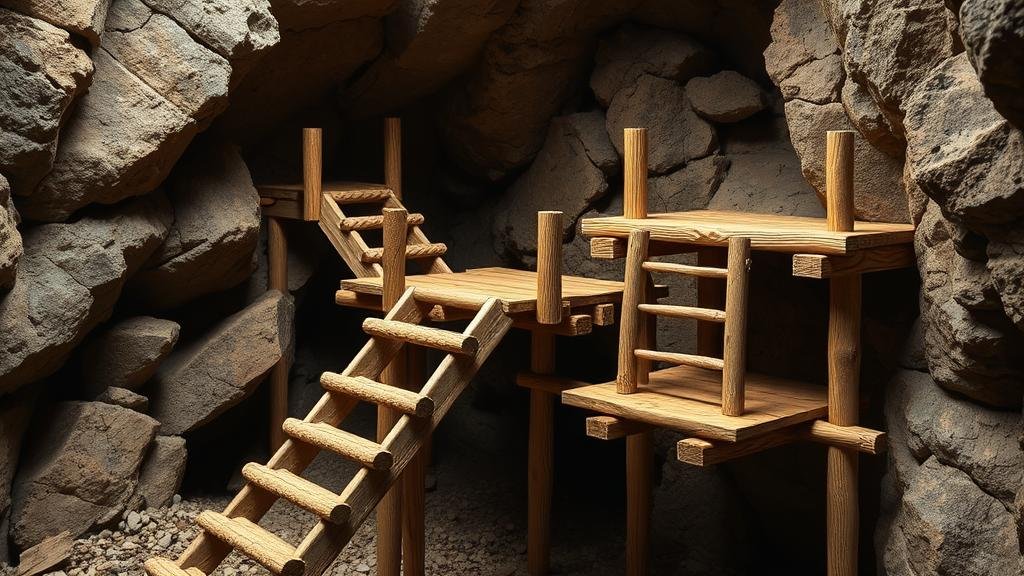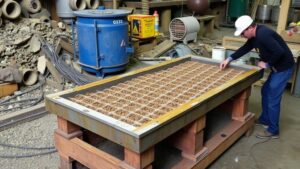Constructing Wooden Mine Ladders and Platforms Based on Agricola’s Designs
Constructing Wooden Mine Ladders and Platforms Based on Agricola’s Designs
The extraction of minerals from the earth has been pivotal to human civilization, and the methods employed to facilitate this process have evolved considerably over time. One notable reference in mining technology is Georgius Agricola’s seminal work, De re metallica, published in 1556. In this treatise, Agricola describes various mining techniques, including the construction of wooden mine ladders and platforms, essential for accessing underground resources. This article aims to delve into these historical designs, their practical applications, and the methods for constructing them effectively.
Understanding Agricolas Designs
Agricola’s designs for mine ladders and platforms reflect an early understanding of structural engineering and safety. His recommendations were based on empirical observations and experiences from his contemporaries. The ladders, made primarily of wood, served a critical function in vertical mining operations, where shafts extended deep into the earth.
- Agricola emphasized the importance of using sturdy materials that could withstand pressure and wear.
- He recommended using softwoods such as pine or fir due to their availability and ease of use, along with hardwoods for critical joins.
Materials Required
The construction of wooden mine ladders and platforms necessitates a careful selection of materials to ensure safety and longevity. Key materials include:
- Timber: The choice of timber is crucial; as mentioned earlier, softwoods and hardwoods are preferred based on load requirements.
- Fasteners: Wooden pegs, nails, or metal brackets are commonly used to secure joints.
- Tools: Essential tools include saws, hammers, drills, and measuring devices.
Construction Techniques
Building wooden ladders and platforms according to Agricolas principles involves several steps. Understanding these steps can considerably ease the construction process.
Building Wooden Ladders
The construction of a wooden ladder requires precise measurements to ensure stability. Follow these steps:
- Measure the desired height of the shaft. ladder should extend slightly above the ground level for safety.
- Cut two long beams for the sides of the ladder. Typically, these beams should be at least 2 inches in thickness to support weight.
- Cut cross-beams, or rungs, to connect the side beams. These should be spaced at intervals of approximately 12 to 18 inches.
- Drill holes for the rungs and secure them using wooden pegs or metal brackets. Ensure each rung is level for ease of use.
Constructing Platforms
Platforms are essential for resting and performing tasks during mining operations. Their construction also follows systematic procedures:
- Select a location that provides a firm base and is free from excessive moisture.
- Construct corner supports using sturdy timber that can handle the anticipated load.
- Lay down beams horizontally to create the floor frame, ensuring they are adequately spaced to avoid sagging.
- Cover the frame with wooden planks, securing them with nails or screws to create a stable work surface.
Real-World Applications
While Agricolas designs date back to the Renaissance, they are still relevant today in artisanal mining and in regions where modern equipment is scarce. For example, small-scale miners in South America frequently employ similar structures when extracting minerals from alluvial deposits.
Also, the principles described by Agricola can be adapted in modern construction and landscaping, enhancing our understanding of structural integrity and material resilience. For example, wooden platforms are prevalent in wildlife observation areas and hiking trails, reflecting timeless design philosophies.
Safety Considerations
While constructing and using wooden ladders and platforms, safety must remain a priority. Regular inspections are necessary to check for wear and tear, and users must be trained on proper ladder use to prevent accidents. Essential safety measures include:
- Ensuring the ladder is adequately anchored before use.
- Adopting load limits based on the materials used in construction.
Conclusion
In summary, constructing wooden mine ladders and platforms based on Agricola’s designs not only showcases historical mining techniques but also emphasizes the importance of structural safety and innovation. Understanding these principles allows modern builders and miners to create effective, safe solutions in various applications, bridging the gap between historical practices and contemporary needs.
For those interested in pursuing this construction, an actionable takeaway is to start by sourcing quality materials and familiarizing oneself with traditional building techniques, ensuring that every safety measure is observed to create a durable and reliable mining structure.



